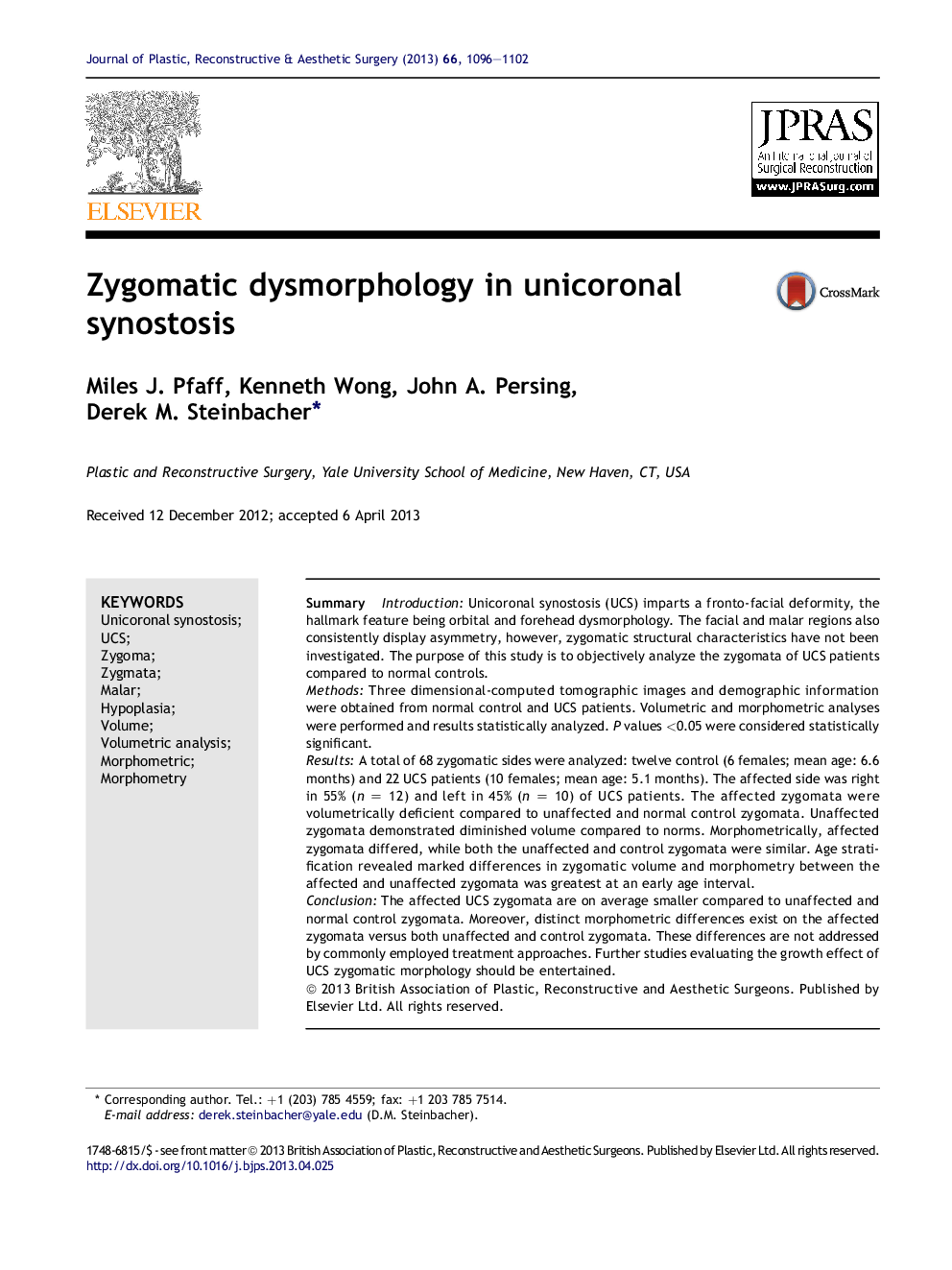| Article ID | Journal | Published Year | Pages | File Type |
|---|---|---|---|---|
| 6214643 | Journal of Plastic, Reconstructive & Aesthetic Surgery | 2013 | 7 Pages |
SummaryIntroductionUnicoronal synostosis (UCS) imparts a fronto-facial deformity, the hallmark feature being orbital and forehead dysmorphology. The facial and malar regions also consistently display asymmetry, however, zygomatic structural characteristics have not been investigated. The purpose of this study is to objectively analyze the zygomata of UCS patients compared to normal controls.MethodsThree dimensional-computed tomographic images and demographic information were obtained from normal control and UCS patients. Volumetric and morphometric analyses were performed and results statistically analyzed. P values <0.05 were considered statistically significant.ResultsA total of 68 zygomatic sides were analyzed: twelve control (6 females; mean age: 6.6 months) and 22 UCS patients (10 females; mean age: 5.1 months). The affected side was right in 55% (n = 12) and left in 45% (n = 10) of UCS patients. The affected zygomata were volumetrically deficient compared to unaffected and normal control zygomata. Unaffected zygomata demonstrated diminished volume compared to norms. Morphometrically, affected zygomata differed, while both the unaffected and control zygomata were similar. Age stratification revealed marked differences in zygomatic volume and morphometry between the affected and unaffected zygomata was greatest at an early age interval.ConclusionThe affected UCS zygomata are on average smaller compared to unaffected and normal control zygomata. Moreover, distinct morphometric differences exist on the affected zygomata versus both unaffected and control zygomata. These differences are not addressed by commonly employed treatment approaches. Further studies evaluating the growth effect of UCS zygomatic morphology should be entertained.
